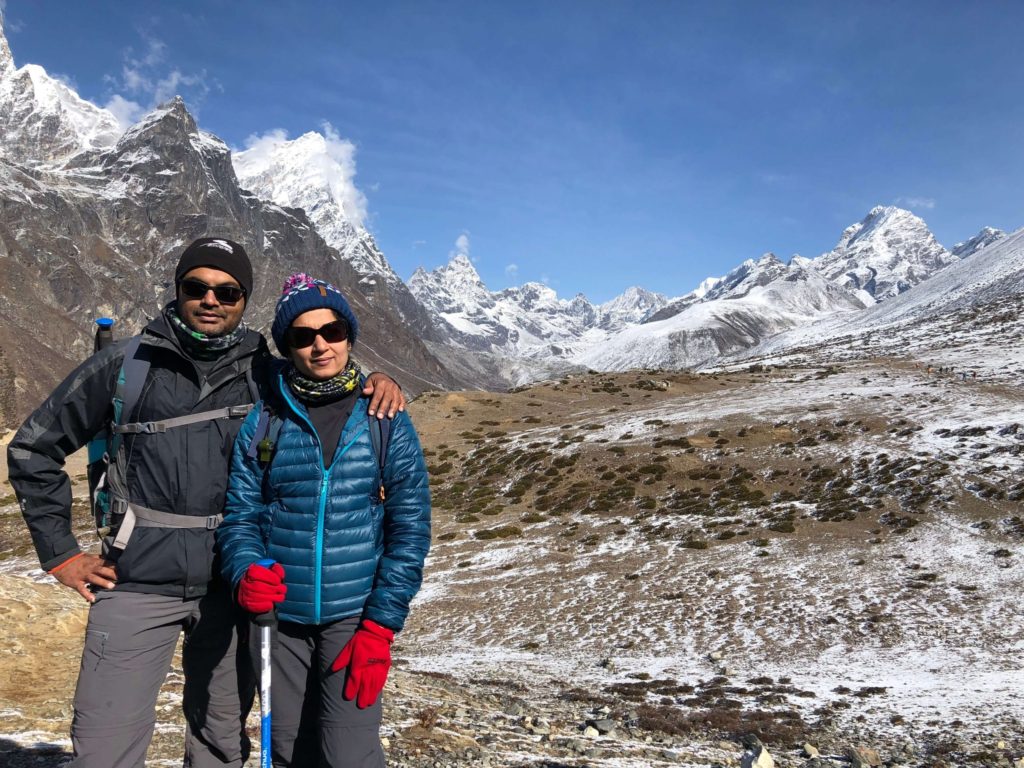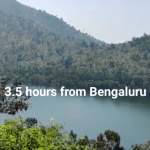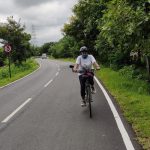HSR resident Chitra Praneeth shares her fascinating story of trekking to reach the base of Mt. Everest

Chitra Praneeth (45), a resident of Sector 1, a micro biologist by education and an interior designer by profession, is a prominent social worker. As an active member of HSR Citizen Forum, she does everything from spreading awareness on plastic ban and garbage segregation to voter ID camps, tree plantations, and more. When she’s not doing that, she goes on a holiday. In 2018, it was no less than trekking to reach the mighty Mount Everest.
Ask her how she felt, and Chitra remember’s Sir Edmund Hilary’s oft repeated quote:“It’s not the mountain we conquer, but ourselves”. At 8848 metres above sea level, Mt Everest towers over the Himalayas. “For the 18 of us, all part of Karnataka Mountaineering Association, our sight was set on Everest Base Camp, which is still a blood-thickening 5364 mtrs above sea level. We knew it was going to be tough, but I think we still underestimated the difficulty of such a trek to get to the feet of the world’s highest mountain.”
DANGEROUS DESCENT
I flew from Kathmandu into Tenzing-Hilary Airport brimming with excitement at the adventure ahead. Perched halfway up a cliff face, the runway is about 500 mtrs long and is considered one of the most dangerous airports. A minor pilot error could land us into the side of the mountain.
With my feet back on the ground, I started my trek with a three-hour walk, mostly downhill, to our first camp Phakding (2610 mtrs). I knew this was going to be a challenge, but after the first day, my confidence had gone up. As I was warming up my body, sipping hot tea inside the teahouse, I got a chance to interact with a lovely family of five from Pune. They had three children, all aged below 13 years. They were on this trek with zero knowledge, be it the trail, temperature or hardship. Seeing their zeal and enthusiasm, my confidence doubled.
My outlook changed soon enough. The next day, I climbed for seven hours. The trail was weaving through pine forests and blooming rhododendron flowers. With Dudh Kosi River roaring below me, I crossed four suspension bridges. It was a gruelling ascent and a difficult trail because of the constant traffic of co-trekkers and dusty roads. I passed dozens of yak trains carrying supplies to the teahouses up the mountains. I often wondered how these animals could walk through such heights with such a calm demeanour.
NAMCHE BAZAAR
After two hours up a steep trail, I arrived at the bustling marketplace of Namche Bazaar (3440 mtrs), my next camp and gateway to the high Himalayas. The air was thinner here and I was out of breath while climbing the single flight of stairs from the dining room to the sleeping quarters.
Namche is the first real glimpse into Sherpa culture. This beautiful little town is always bustling with tourists. Colourful shops with variety of souvenirs and warm wear. Friendly people and yummy mouth-watering German bakeries is what Namche is all about. I spent hours at the bakery with free Wi-Fi and chatting with my friends.
DINGBOCHE
From Namche, I trekked higher and stayed for a night at Tengboche (3860 mtrs), and then made my way up to Dingboche (4410 mtrs).
The air was thin and breathing was a chore here. I would stop frequently to rest and catch my breath. My friends watched me closely, looking for any signs of altitude sickness.
Most of us experience some effects of the altitude, particularly headache and loss of appetite. Drinking 3-4 litres of water was a must every day with frequent visits to the washroom becoming an ordeal. I personally hated every visit to the loo for lack of hygiene and water. From this place (Dingboche), four of my group members had to return due to lack of fitness and altitude sickness. It was a hard decision to take and I was worried about the morale and confidence levels in the rest of the group. I desperately felt the need to stay for an extra day at Dingboche.
However, the rest of the group started their journey towards Lobuche (4940 mtrs). At the top of an ascent, we turned a corner and arrived at the memorial of fallen mountaineers and Sherpas. I quietly made my way around to each memorial. It was a reverential moment and a sobering reminder of the risks and dangers on the mountain. At this point, my feelings were completely not in my control, and I cried my heart out and was constantly remembering my kids back home. I was thinking of the risks I had taken and if they were worth it. But I felt at one point of time that I must value my passion and the calling of the mountains.
THE FINAL ASCENT
The days are physically gruelling and I started to wear down mentally and just wanted to go home. It became even harder to breathe as I pushed past an elevation of 5000 meters. I spent two and a half hours on the trail trying to sort my head out and focus. It’s a particularly challenging trail, going up and down passes and scrambling over rocks that I was almost in tears a couple of times. Altitude sickness was hitting me hard and I felt like giving up with every step I took. I was just three hours from my destination and fighting with my mind to come to terms with the difficulty I was going through.
Finally, I decided to risk my life less and turn around to go back. It took some time to come to terms with what I had done and make myself realise and believe that the mountains will always be there to be scaled again. I made a promise to myself that I would touch that peak next time with much more confidence and strength, physically and mentally.
There was no euphoria, and no happiness of achievement. I hugged my friends, congratulated everyone who had accompanied us and thanked the guides for leading us to safety.
REFLECTIONS
The Himalayas are breathtakingly beautiful, and I realised just how insignificant I was on this mighty mountain. It was physically demanding but it was overcoming the mental barriers that I am completely proud of. I was just 300 metres away from the Everest Base Camp, which would have taken another two hours.



